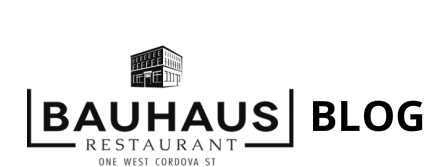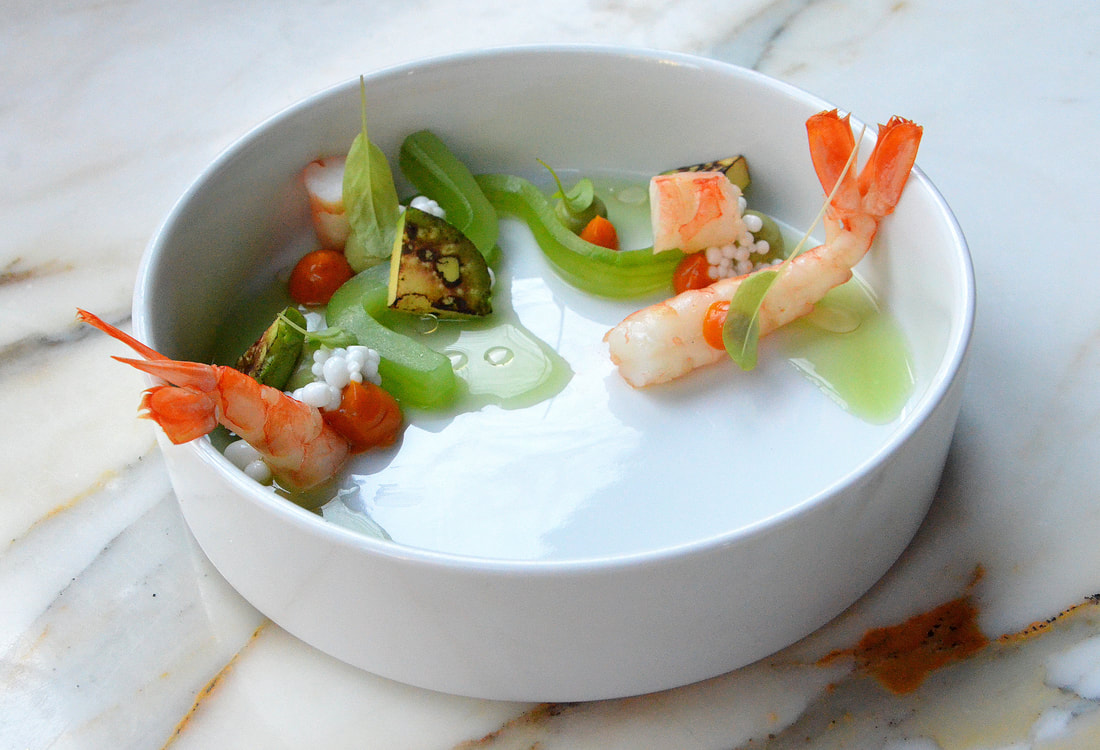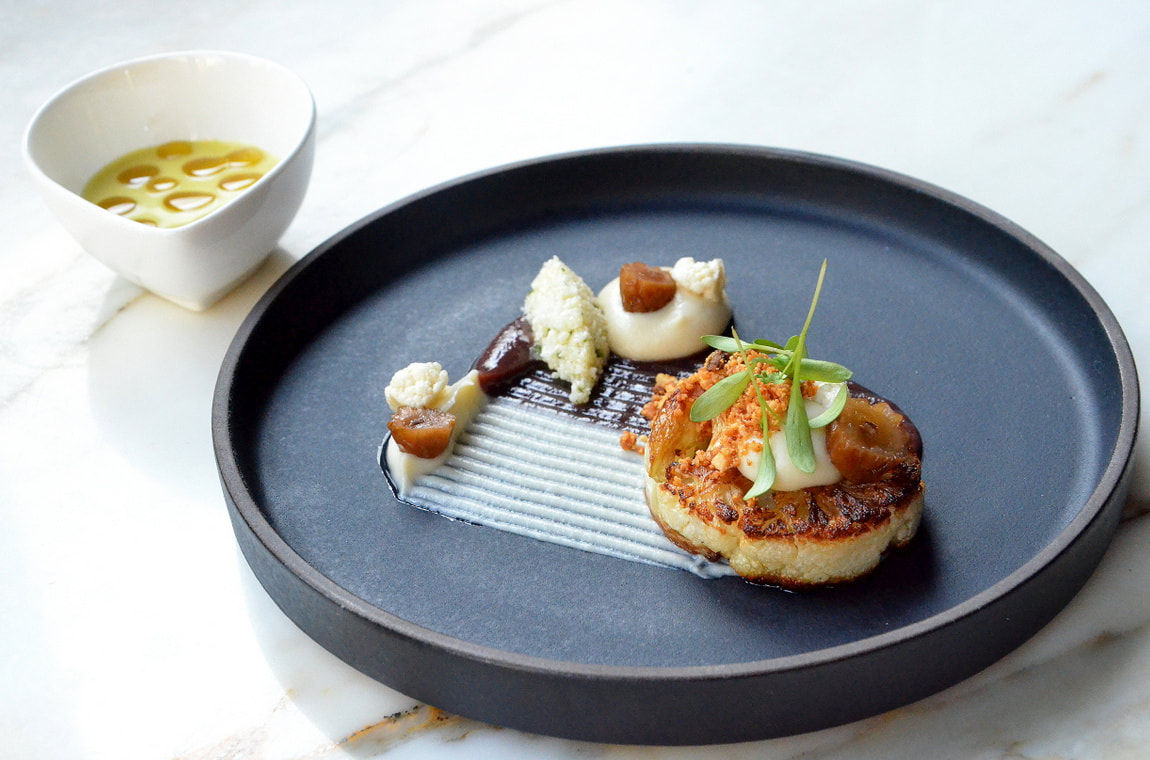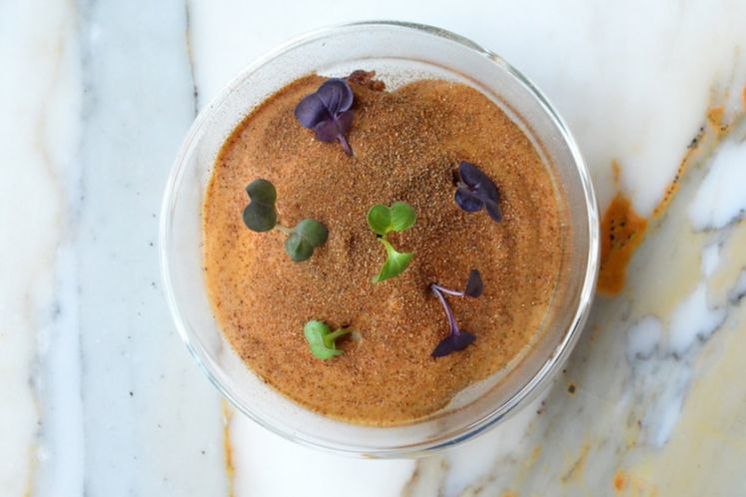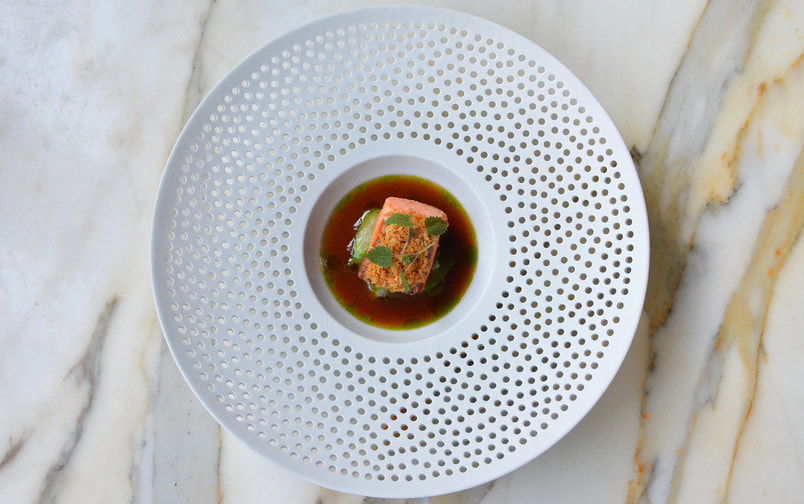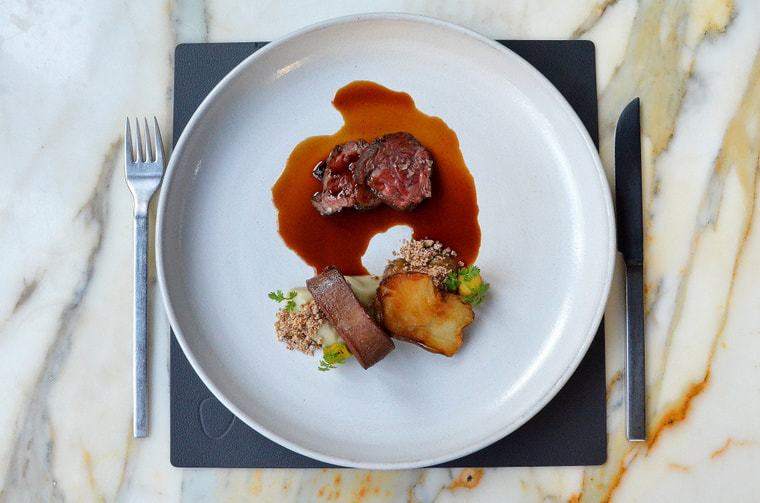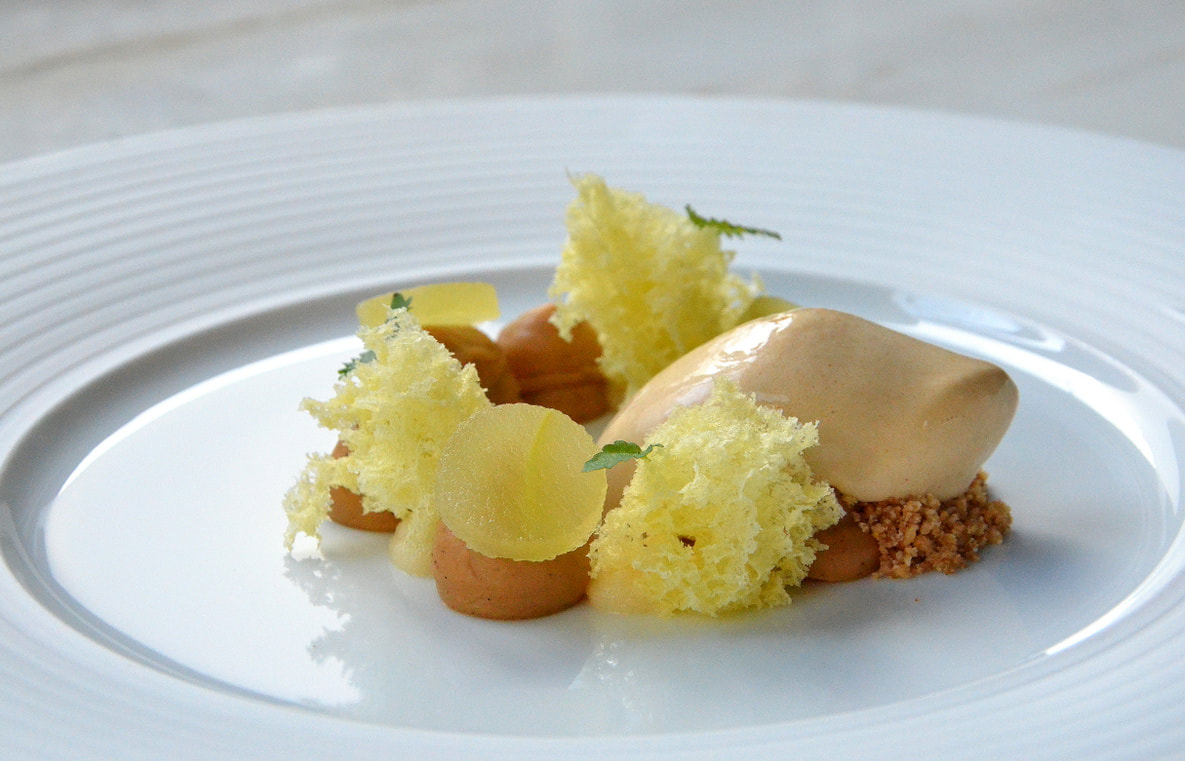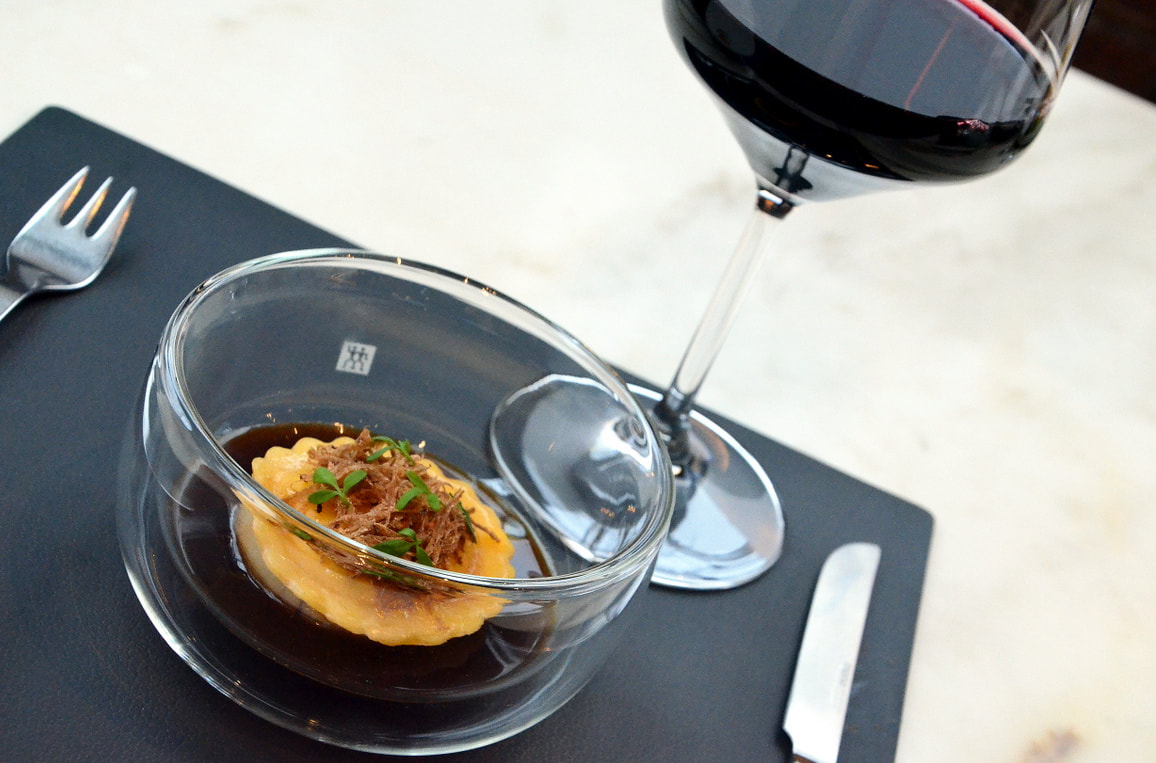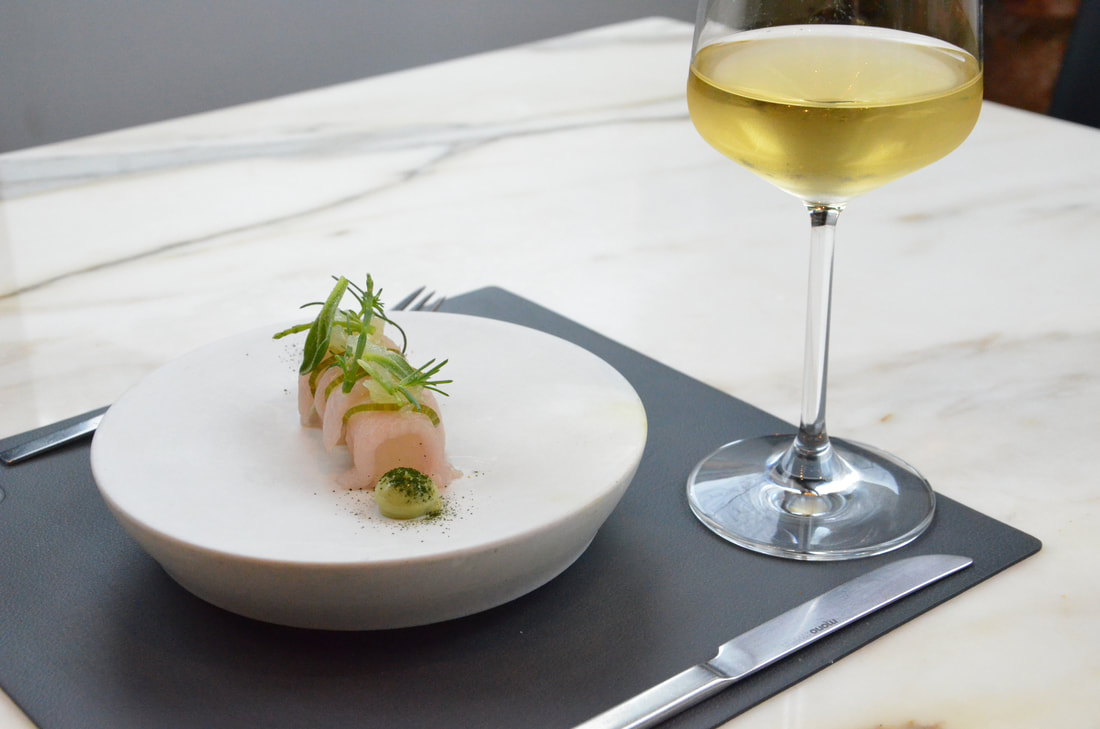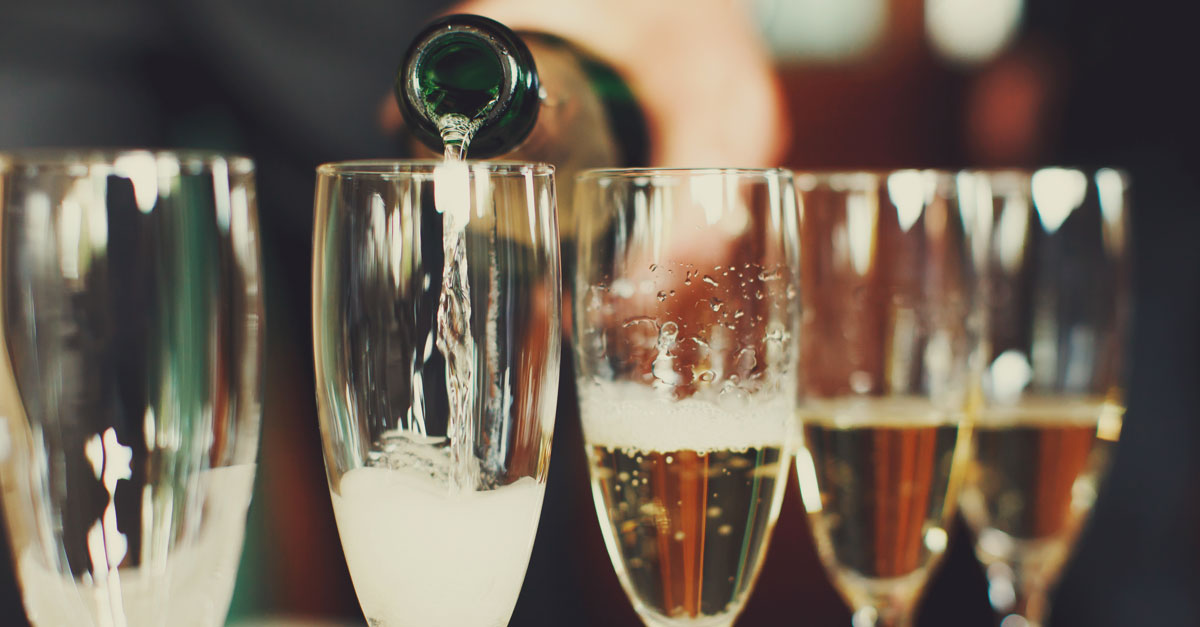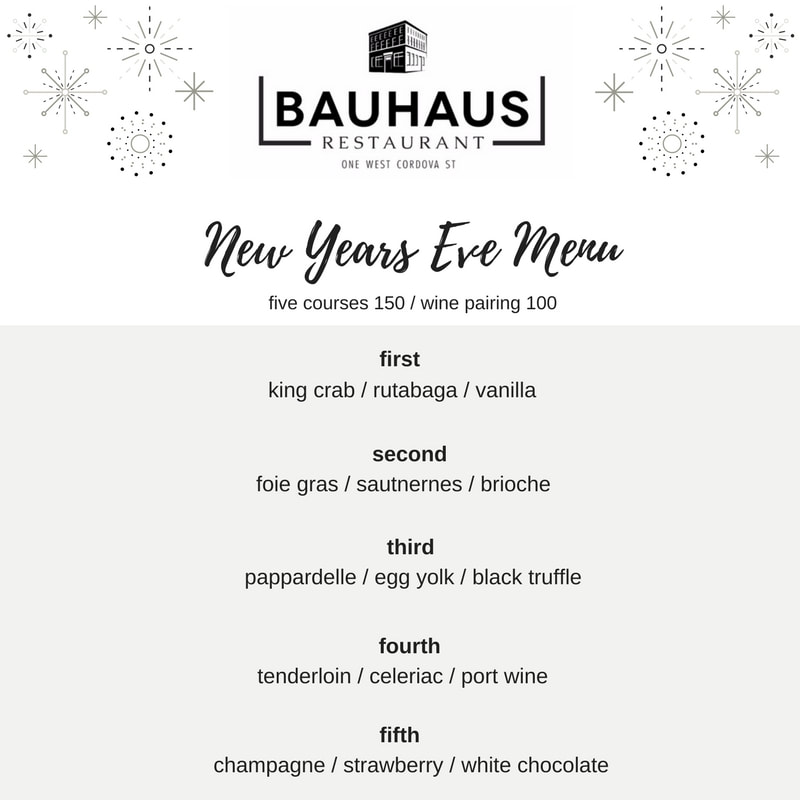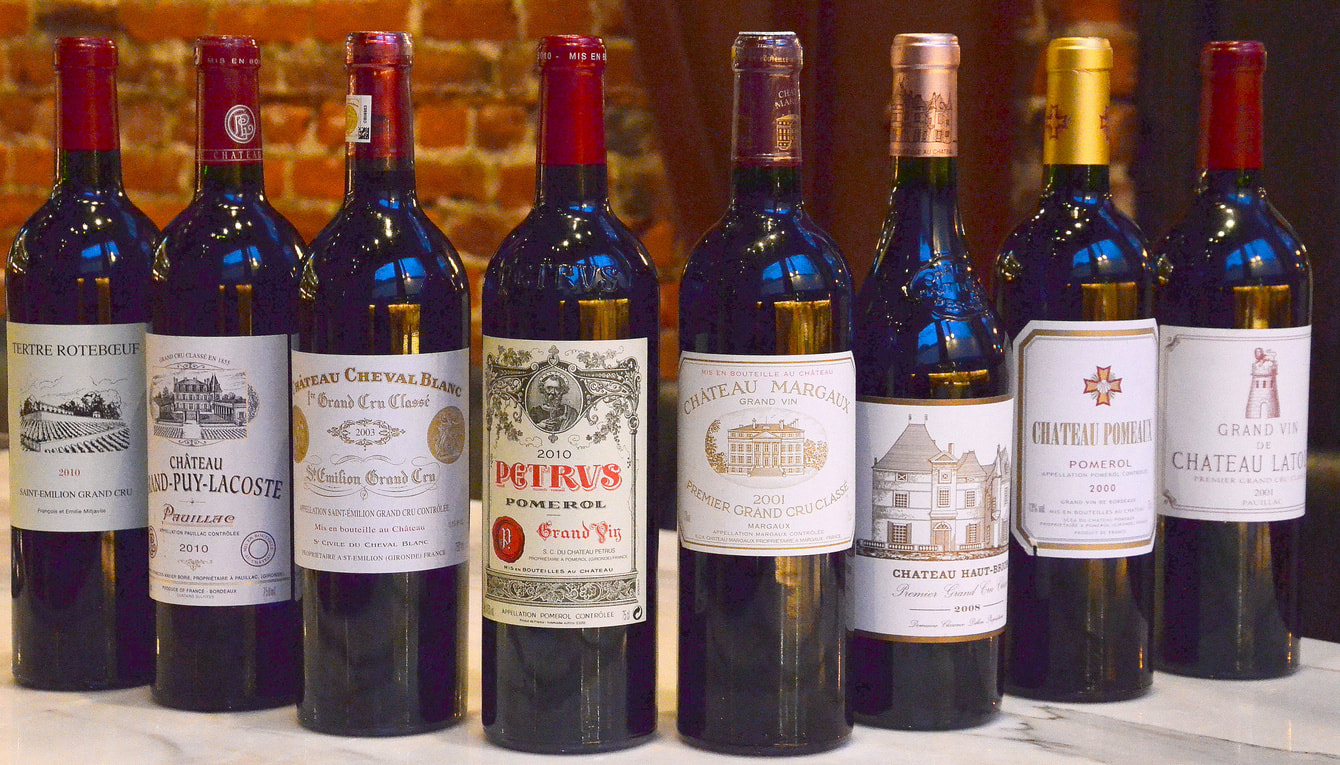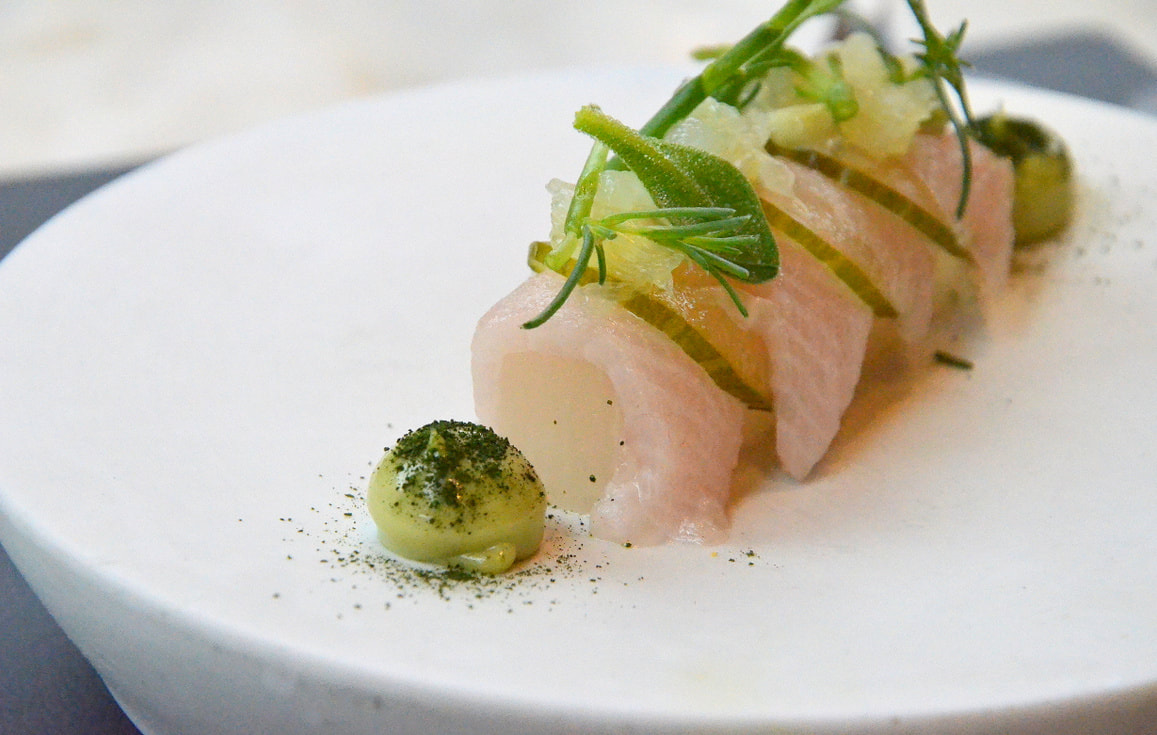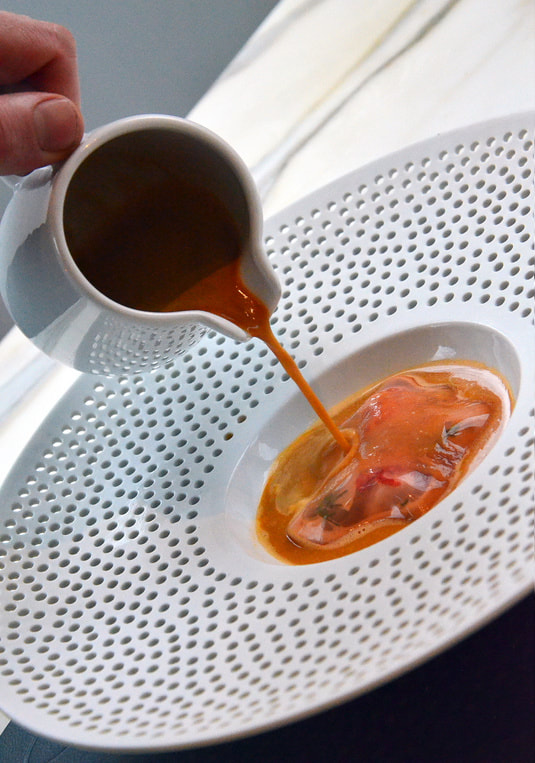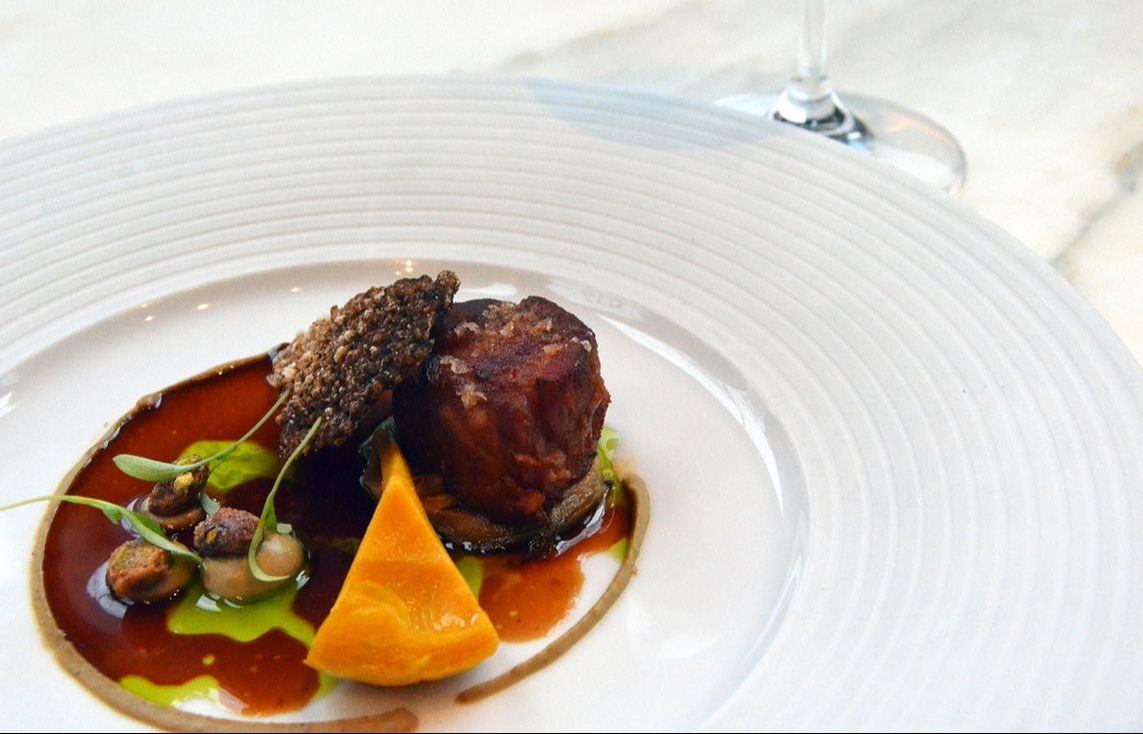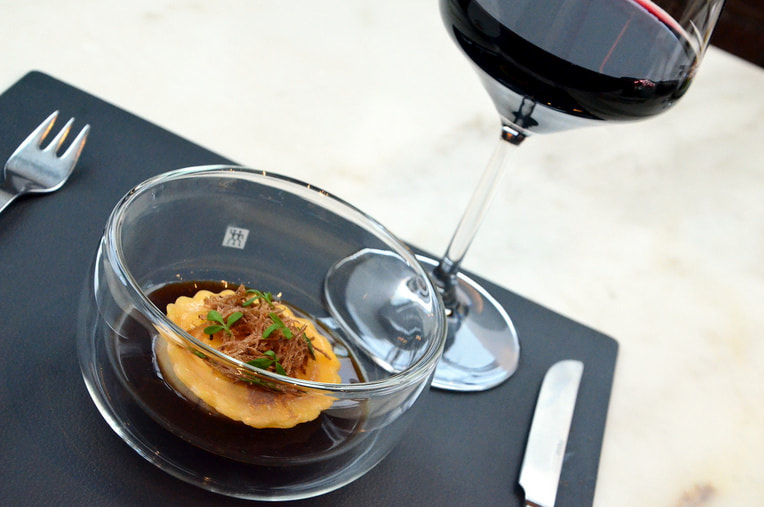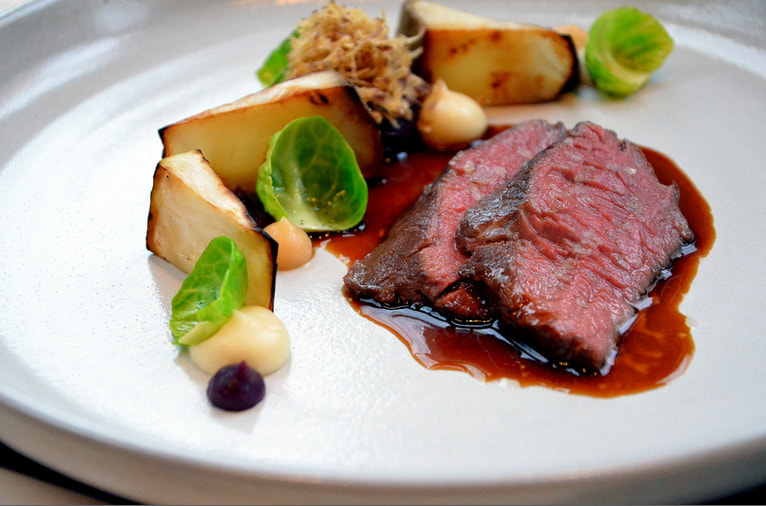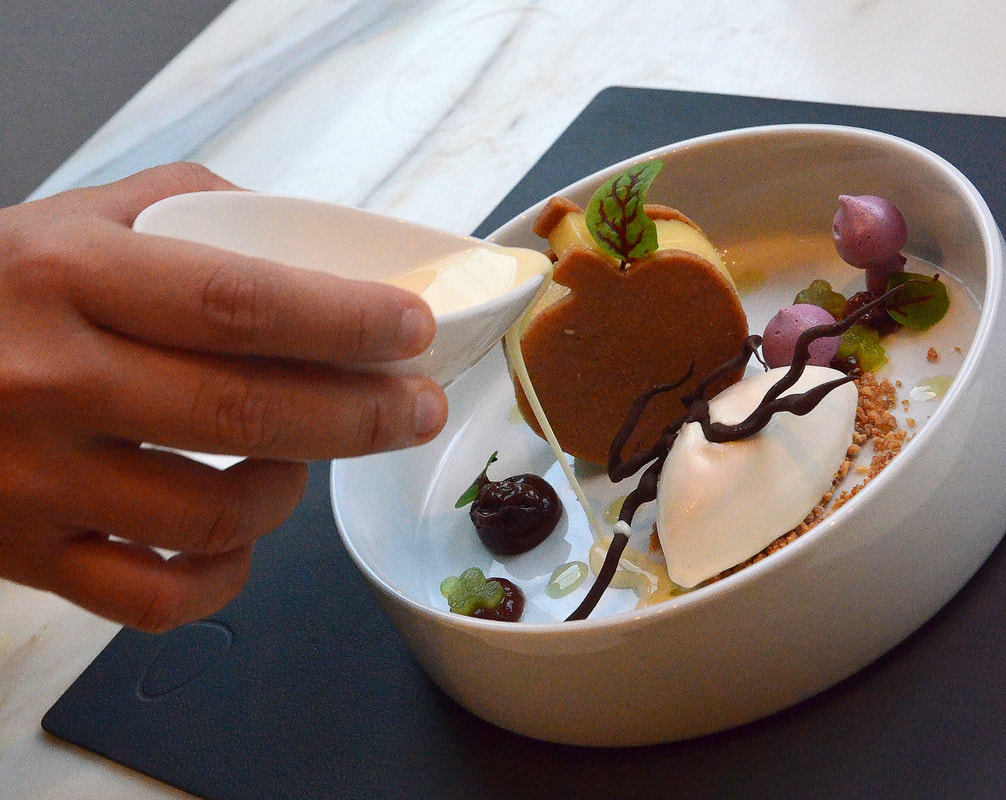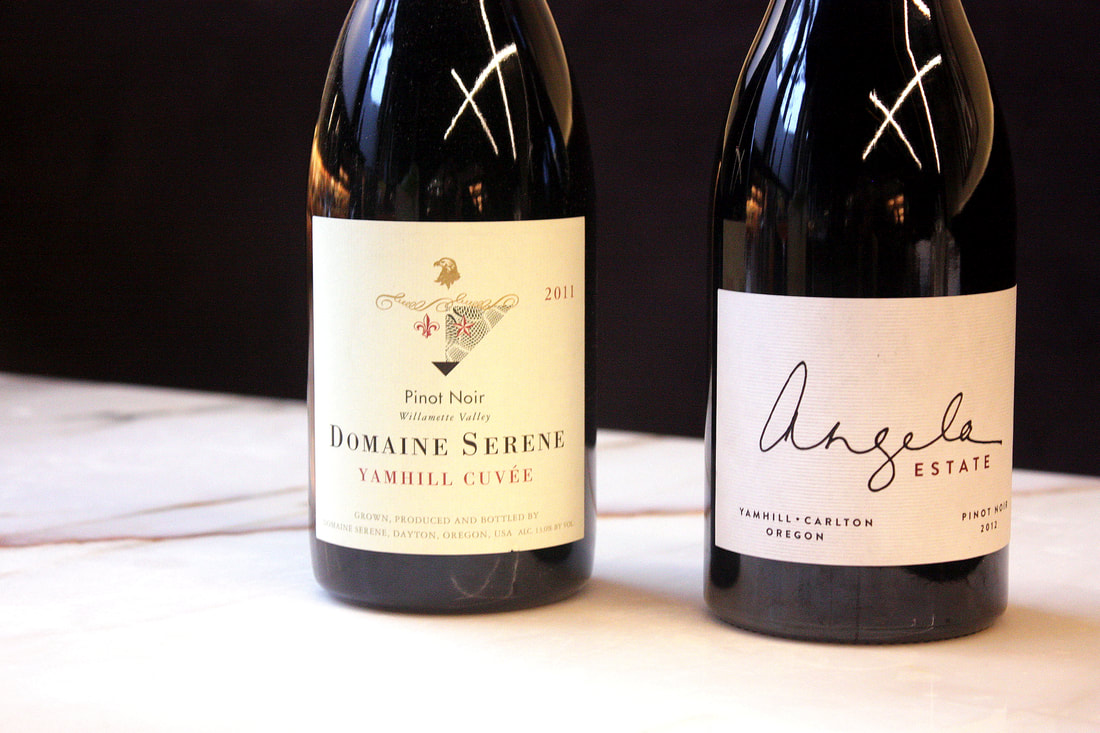|
With crocuses sprouting underneath the frost and the sun climbing higher in the sky, we're welcoming the beginnings of spring with Executive Chef Tim Schulte & David Mueller's new Tasting Menu. carabineros avocado / cucumber / sand-thorn cauliflower almond / raisin / cilantro onsen egg mushrooms / homemade bacon / truffle sockeye salmon shrimp / gai lan / shallot ginger essence beef sunchoke / leek / hay apple cake brown butter ice cream created by our Executive Chef team, David Mueller and Tim Schulte
six courses for 99 / four courses for 79 wine pairing 70 / 54 Bauhaus Restaurant's Wine Director, Alan Koller, explores the art of wine pairings and the many challenges that come with it, from the step-by-step process of searching for a wine to the pressure of ruining a dish. "It is a new year and more often than not, that means ‘a year in review’ or ‘great wines of the year’ thing, but I will leave that to Wine Spectator. Instead of reminiscing wines that are no longer available in the liquor store, let’s take a look into probably the least discussed topic when it comes to wine: pairing food and wine together. Its discussed infrequently, and usually follows the same safe rules that everyone already knows. Even when the show ‘Somm: Into The Bottle’ addressed the topic, they didn’t dive deep. They recommended Beaujolais with a corndog. Somms love Beaujolais, and they will put that stuff with anything it seems. Before we jump into pairings, I want to discuss one of the most important factors: our individual sense of smell and taste. This is part of our biology, and is unique to each of us. As we all know, we have taste buds, and we all have a different number of them. Some people have many more than others, and they’re known as ‘super tasters.’ Others have elevated levels of smell receptors (think master perfumers). Now, when you combine super tasters and people with elevated smell receptors, you will find master sommeliers. These people can pick up the most subtle of flavours, and when you see a blind tasting in which the taster figures out the wine, you can bet they fall into the super taster category. Or, they simply got lucky and used decades of drinking as a reference point.
Now that we know this fact, let’s get into my mindset on how I create pairings. It all begins with the food. It is impossible to pair a wine with a dish that I have never tried. There has been a couple of times years ago where I have tried to do it, and both times the wines were switched immediately upon trying the dish. Now, I won’t pair anything before I try the dish. Let’s move on. So, what am I looking for when I try the dish? Firstly, I’m looking for the main component of the dish – quite often the protein. Protein will dictate the wine. When there is no protein in the dish, I try to look at the intensity of the main component. This is where the old adage of ‘white with fish and red with meat’ comes from, and I will say that this rule is basic, and many of us that make pairings love to break this rule. I hope that you’re ready for when I do. More importantly, I hope that you trust the reasoning behind breaking the rules. If the dish doesn’t have a protein, I will move on to the next steps listed below. The second component I look for in a dish is the sauce. Is it cream-based, herb-based, shellfish- or fish-based, a reduction, red wine sauce, mole, or any of the other sauces that I don’t have time to list? Personally, I pay more attention to the sauce than the protein, Quite often the sauce can be the more dominant flavour in the dish. The third component I search for is the supporting cast – what comes with the dish? Essentially, what are the accenting flavours the chefs have included? Did they use nuts, herbs, vegetables, and which ones? Do they have a hidden strong flavour, like blue cheese or plankton? Finally, the last component I take stock of is the mouthfeel of the dish. I am looking for intensity, sweetness, saltiness, acidity, and how delicate or fatty the dish is. This is the key area for the overall pairing, in my opinion. Many pairings go wrong at this stage because the wine creates a conflict with the dish, which can result in you reacting negatively to the dish. Think of a mild dish that gets hit with a strong tannic finish from the wine. That is not a pleasant finish, and unfortunately when you get a pairing wrong, the way the bite finishes can dictate whether or not you like the dish as a whole. It is not lost on me that I can destroy an otherwise excellent dish with the wrong wine. 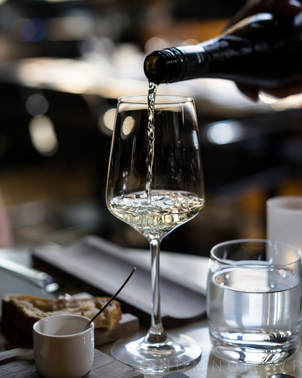 NomNomYVR NomNomYVR Once I decipher the dish, I begin to think about wine possibilities. To do this I consider what the dish wants and what it doesn’t. Step 1 is the wine colour. Red, white, rose. Sometimes I try all three, but usually I can narrow it down to one of them quickly. Step 2 is the body of the wine. How heavy a wine do I need? The weight of the dish and the weight of the wine should be similar. Step 3 is acidity and tannins. Does the dish want strong acidity or mild acidity. Do I need tannins? If so, how do I want those tannins to react in your mouth? Firm, mild, or silky? Step 4 is the flavour profile of the wine. Do I want to add a particular flavour, or a contrast? Is this a dish that wants a complimenting flavour, such as truffle, or do I just want to accent the dish to create a slightly more complex flavour profile? In step 4, the possibilities are endless. Step 5 is to find wines that will possibly work, and begin opening bottles to try with the dish. Then we adjust, and adjust some more. Step 6 is to involve the staff in the tasting. What is their response to the wine with the dish? Hopefully at this point I have something that we can present to guests. Sometimes I do, but sometimes I go back to the drawing board and start all over again. To give you an example, I will use our present pairing of the Hamachi with pickled cucumber and daikon with sea vegetables and a plankton emulsion from the Tasting Menu. The chefs have created a beautiful opening dish to the menu. When you try the dish, you find it very delicate but it has a great deal of complexity. The joy in the dish is experiencing these restrained flavours - the subtle nature of the Hamachi, contrasted by the bright acidic tones of the cucumber and daikon, and these amazing oceanic notes of the sea vegetables and plankton.
The process of choosing the wine went this way. I knew this dish needed a white wine, and I quickly ruled out sake because of the delicate and complex flavours. I began with sparkling wine, but found the acidity to be too much with the pickled daikon, and it distracted me from other flavours I wanted to showcase. I wanted a delicate white wine with mild acidity. Pinot Grigio came up in conversation, but I thought that was boring. I brought in a viognier from Israel – no. Albarino from Spain – nope. Loureiro from Portugal – again, no. Something from Greece that I can’t recall – no. Riesling – no. All of these wines were too big and overpowered the dish. I went home that day and began researching wines, determined to find a white that is light, tart, and mildly acidic. I went on to the BCLDB website and searched obscure white wines, created a list, and reviewed the winemaker notes for the wines. I drove to a liquor store where I could find the wines I chose, and walked in and bought the first one on the list. Took it back to the car, opened it and knew right away that I had found the right wine. I walked back in and bought the rest of their stock. The wine is the Jidvei from Transylvania in Romania. A Feteasca Alba. A light, dry wine that has tart fruit to contrast the sweetness of the Hamachi, pickled cucumber, and daikon. The wine finished with a wonderful lime leaf and blossom tone that worked well with the lime the chefs used in the dish. The final part of doing a wine pairing is to create a convincing story to create the full experience for your guests. If I just put a glass of wine with your dish, what was the point of doing the pairing? A pairing is designed to elevate an experience – it should challenge you, educate you, excite you, and most importantly it should create conversation. It is the conversation that is sometimes key. You may not agree with the pairing, but my hope is that you understand the concept as to why I did what I did. I hope you enjoyed a brief look into the process of wine pairings. I am about to start the journey all over again this week. Look for our new tasting menu coming at the end of January!" Ring in 2018 in style at Bauhaus with an exclusive five course dinner. Featuring king crab, foie gras, beef tenderloin, and plenty of champagne, Bauhaus is the best place to be on the last night of 2017. Click the button below to make your reservation.
Please note a credit card is required. Bauhaus's Wine Director, Alan Koller, is back on the blog - this time, talking about his long journey with Bordeaux. He's warning you - this post is a long one. "You may have noticed that I have neglected talking about Bordeaux ever since this series of mine began, but I can avoid it no longer. Bordeaux, oh, Bordeaux - how I have hated you. You are my abusive relationship in the wine world. So many times, I have been lucky enough to try what was supposed to be an amazing wine and somehow you have let me down. Now, was it your fault? Probably not… but maybe it was. I know this may sound odd to hear from a restaurant wine director, but I have my reasons. Let’s get into this: when did my relationship start with Bordeaux? Back in the 90s I was at the Waterfront Hotel, and I am sure I had Bordeaux during that time but I can’t remember any one specific moment with a bottle of Bordeaux. However, I do remember buying a copy of Michael Broadbent’s The Great Vintage Wine Book. This was my first look into the vintage ratings for some of the best wines, and specifically Bordeaux for the last 200+ years. That was the moment the seed was planted. Honestly, it wasn’t until I got to the Wedgewood Hotel that I began getting more moments with Bordeaux. I remember my “I drank the Kool-Aid” moment where I was confused as to why people would be buying a $700 bottle of ‘97 Insignia, over the ‘87 Domaine Chevalier for half the price. Of course, the ‘97 Insignia was a 100-point wine but it was 2001, there was no way the Insignia was ready to drink. My logic was that even though the Domaine Chevalier was an ’87, an average year, at least this wine should show some more character than the dark tannic fruit bomb that was the Insignia. So, we had 6 bottles, I sold 4 of them before I tried the wine. Have you heard the words ‘muddy’ and ‘acidic’ used as negative descriptors for wine? Well, this is the wine where you would have used those words. I had believed the hype of Bordeaux, and that cost me. This was the first moment of disappointment with Bordeaux, but sadly it was not my last. In fairness, this was more my lack of knowledge than the fault of Bordeaux. On an average year, Domaine Chevalier isn’t guaranteed to survive 14 years. There were other moments with Bordeaux at the Wedgewood that added to my frustration. A guest dropped 3k on a bottle of the 2000 Petrus in 2004. It smelled incredible but it was so tannic and aggressive it was almost undrinkable. Infanticide is the only word you could use. Then, there was a guest who brought in 3 vintage Bordeaux, 2 from the ‘70s and 1 from the ‘60s. All three were done – undrinkable. Again, not Bordeaux’s fault but it certainly added to my growing frustration. Let’s leave the Wedgewood and move onto to my next restaurant and that exposed me to the failure of an ‘86 Mouton. Apparently, the ‘86 Mouton was known as the donut by some critics because it starts great and is empty in the middle. Decanting it was the mistake made by the guest. Sometimes air isn’t a good thing. Now, I moved on to a smaller restaurant for a while and my exposure to Bordeaux dropped for a while, then I move to Black+Blue in 2013. Black and Blue was moving some Bordeaux and its clientele were bringing in their own bottles from home. I thought I was going to figure out what the fascination is with Bordeaux. Needless to say, that didn’t happen (again). I can honestly say I never tried one Bordeaux the entire time that made me say “WOW.” That is not to say I didn’t have some good ones, but nothing worth the price people were paying. I remember trying a 2003 Margaux from a magnum. It was thin and unexciting, and for a twelve year old Bordeaux of this quality that made absolutely no sense (what did make sense is a thought I had a year later – was the bottle fake?) Then, there was the incident at a private Bordeaux tasting where the signature wine in the tasting was the 1995 Decru Beacaillou, Wine Spectator’s Wine of the Year in 1998. So, I am sitting there with 20 other wine snobs and I am listening to the host rant on about how amazing this wine is, and shockingly people are agreeing with him. Ultimately, I think the host tried the wine when he had opened it three hours prior, but by the time the rest of us got to it the wine had thinned out. It has almost nothing redeeming left in it other than some rotted vegetation and a light cedar and smoke. So, I moved on from Black+Blue and took a break from the elite wine world for a couple of years. Eventually, I arrived at Bauhaus and fortunately we attract a clientele that enjoy vintage Bordeaux. We had a Zachys wine dinner for 10 people one evening. They brought in the 1982 vintage of Cheval Blanc, Margeaux, Latour, and Montrose. ‘82 is one of the storied vintages from Bordeaux, so this was the first time I had a chance to try a legendary Bordeaux in its prime. I was amazed at how the Montrose still showed so much fruit. What I wasn’t ready for was the intense smokiness, strong cedar, and earthy umami flavours of the other wines. I can say that I now understood, but am still too immature to fully appreciate them. 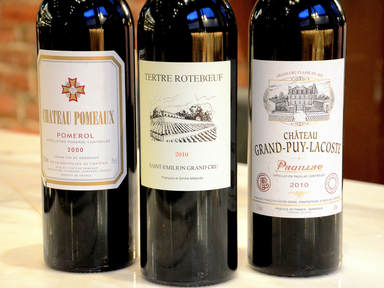 A month ago, some regulars showed up with 4 vintages of Grande-Puy-Lacoste. The 2000, 1996, 1995, and the 1982. The 2000 was still young. The 1995 was good, but the stars were the ‘96 and the ‘82. The ‘82 still held its fruit, showed great aged complexity and still had a balanced amount of acidity. The guests and I felt it still had a few years left in it. The ‘96 also showed well, except the acidity was soft so it was drinking as well as it ever would, and again the guests agreed. My next moment came a couple of weeks later when some guests showed up with the ‘82 Lynch Bages and an ‘82 Montrose. Once again, the Montrose showed very well and tasted the same as the one I tried a year prior. It’s nice to see consistency in a wine at 35 years old. The Lynch Bages showed very nicely as well, still had great fruit balanced with the typical earthy tones and a decent amount of acidity. Both wines appeared to me to still have some years left in them. And this is one of the keys to what makes Bordeaux great. On release both of these wines would have been about $50 dollars and for that money you got a wine that aged into something wonderful 35 years later. That is what makes Bordeaux. Very few wine regions can say that as consistently as Bordeaux can. After 25 years of tasting, and hundreds of bottles of Bordeaux, this has been a glimpse of my journey into the Bordeaux world. What have I learned thus far in the journey? Well, I have been in some of the nicest cars ever made, visited some of the nicest hotels in the world, and I have tried some of the most storied Bordeaux ever made. It is easy to see what sets a supercar apart from the rest. There are statistics, an attention to detail, and recognizable quality to even the most untrained eye. You can walk into a 5 star hotel and immediately see what separates a Fairmont from a Delta hotel. There are guidelines that tell you what the difference between a 4 and 5 star hotel is. Unfortunately, the same cannot be said with Bordeaux – there are no guides to follow, no statistics to be read, and nothing defining about the bottle or a poured glass that will separate it from another wine. The only way for you to truly understand what separates Bordeaux from all other wines on the planet is to put in the work. What work do you have to do? Do the book work. Learn the region and sub-regions, learn the classifications and learn the vintages. Learn the different houses that make these wines. Then, taste a lot of Bordeaux. Extend your tastings to include vertical tastings from the same winery and horizontal vintage tastings of the same year. Buy a case of 6 decent Bordeaux and age it for 18 years. Drink 1 bottle every three years just to observe how a wine developed in the bottle. Learn to buy from the best years and store the wine for the 20 to 40 it needs to develop. Oh, and did I mention to keep drinking and pushing yourself? As you read this to-do list you may recognize the incredible amount of work and money it takes to learn about Bordeaux. That is what makes Bordeaux the greatest in the world. You can drive a Ferrari, you can stay at the Ritz. All that takes is money. But to understand and truly appreciate Bordeaux you must invest your time, heart, and soul into it. It will challenge you, frustrate you, and confuse you, but there will be times you will have the moment of clarity that will prove to you once and for all, Bordeaux has earned the right to be called the best. I am very lucky to have tried the wines I have tried, and I am curious to see where the next steps of my journey take me. I hope to see some of you along the way. Feel free to ask me when you are in Bauhaus about what wines we have that will help you along your journey, or where I know there are some hidden secrets in the city. I hope you enjoyed discovering my journey. Happy drinking everyone. PS. I would like to apologize to Burgundy and Barolo for potentially offending them for putting Bordeaux on the top of the list. I know Barolo is called the king of wine, and Burgundy has the highest priced wines in auction. But when it comes to a wine recognized by the masses as the best, Bordeaux wins." - Alan Koller, Wine Director, Bauhaus Restaurant The days are dark, the nights are long, and the new Winter Tasting Menu is here. The 6 course dinner (also available as 4 courses) celebrates the changing of the seasons and is bursting with winter’s flavours. hamachi cucumber / plankton / sea vegetables lobster rutabaga / bottarga lamb harissa / pistachio / eggplant ravioli black truffle / egg yolk / roasted onion elk red cabbage / celeriac / chestnut roasted apple crème anglaise / spekulatius created by our Executive Chef team, David Mueller and Tim Schulte four courses for 79 / six courses for 99 wine pairing 54 / 70 Alan Koller, Bauhaus's Wine Director, is exploring the famed New Word pinot noirs of Oregon in his latest blog post, leading up to Uwe's upcoming Wine Club Dinner on November 20th. Alan discusses the importance of terroir, age, and ultimately the mad-scientist of the wine world - the winemaker. Well, here we are again, more wine talk! This is going to be a slightly different post, as I am focusing on pinot noir from Willamette Valley in Oregon – more specifically, a small part of it in the North West.
Why pinot? It is my favourite red grape, and there are several reasons why. I love how well pinot showcases the terroir it grows in. Riesling does a great job of that as well, but not like pinot. Pinot Noirs are a difficult grape, but the rewards for getting it right are worth it. As pinot ages, it evolves into flavours I respond to very well. Ultimately, pinot noir intrigues me when they are young. I don’t say that about Barolo, Brunello, Bordeaux or Aussie Shiraz, they all need time to evolve into something special, but pinot tells a story from the beginning. Now, why Oregon? Because I love Oregon Pinot! I used to travel to Seattle to visit friends quite a bit, and my two duty free bottles were always Oregon Pinot. The other reason for “why Oregon” is because outside of Burgundy, there are only a few places that really produce top-quality pinot noir. I have discussed German pinot in an earlier blog post. Russian River pinots show very well, but I find the intensity of the fruit can overwhelm the terroir. Sonoma shows a little more restraint in its fruit and does have more varied sub-regions producing solid examples of pinot noir. California can struggle with overly rich soil, which causes the fruit to be very rich. However, pinot loves to struggle. But then there is Oregon: a cooler climate than Sonoma and the Russian River, and a similar soil composition to Burgundy, albeit a touch warmer. When you start dealing with wines from one of these four regions, you really start to find some very special wines. Dundee Hill, Eola Amity Hill, Chehalem Mountain, and Yamhill Carlton - each of these regions produce utterly stunning pinot noirs and each region’s wine show a slightly different character. If you were to do a blind tasting of the pinots of these regions, apparently these are the differences between them. Dundee Hill has a high iron content in its soil, so acidity and minerality will be more present and the palate will show raspberry and black tea flavours. Now, when you move to Eola Amity Hill you get a much different story of plum, currant, and exotic spices. Yamhill Carlton is where the fruit stand up front and makes you take notice. Black cherry and vanilla tones seem to show up a great deal. Finally, there is Chehalem Mountain, and this is where some of the more intense bold style pinots are found, displaying rich cherry, black tea, and baking spice flavours. Now, if I lined up 4 random wines from each region and tasted them blind, would I (or you) find that these previous descriptions apply? Maybe, or maybe we would struggle because there is another factor in the production of wine that can have a very large effect on how the wine taste: the winemaker. The winemaker – the mad scientist/artist of the wine world. I remember a few years back when Wine Spectator did a study. They took 3 winemakers and challenged them to make three wines each. The key to the challenge was that Spectator bought the grapes. Where did the grapes come from? Three different vineyards. Each winemaker was given 1.5 tonne of grapes from each vineyard. The reason why they was to see whether terroir or the winemaker has the most influence on the finished product. The answer was the winemaker. The blind tasters did find some similarities between the wines, but they found that each wine uniquely different. So, the terroir will be present, but ultimately it is how the grapes were pressed, fermented and aged that will define the wine, UNLESS the goal of the winemaker is to showcase the terroir. Learning to make a wine so it showcases its terroir is the lesson new world pinot producers are undertaking. It was not too long ago when North American pinots were over-extracted, had their alcohol levels too high, and were over-oaked. Those styles still exist, but thankfully many wineries started taking trips to Burgundy to discover what made French Burgundy so special. Some of it was winemaking technique, and another big part of it was getting Burgundy root stock. This is why we see “Clone such-and-such” listed as the type of pinot in most of the New World’s top producers of pinot. Simply put, Burgundy vines are better at showing the lands terroir. Oregon is certainly learning the ways of Burgundy. They recognized the soil similarities and they want to show off what Oregon has to offer in terroir. Apologies for the roundabout way of getting back to the terroir but if you have ever had the pleasure of my service, you would already know I do tend to wander. Perhaps it is part of my charm? We have arrived at the point in my blog where we go from a fun little info session to the point of the story! Wouldn’t it be fun to try some Oregon pinots from top wineries, sourced from three of these regions just to see if they are different and if they do measure up to Burgundy? Well your opportunity is on November 20th! That is the date for Uwe’s next wine club dinner. How does the wine club work? It is a bit different than your usual wine dinner. Uwe has Chefs Tim and David create a special menu that will help showcase the wines of the evening. Uwe also brings in wines just for the event. The pricing is $130 before tax and gratuity for the chef’s menu and then the wines are sold by the glass. The best part is, the wine is not priced at the usual restaurant mark-up – Uwe does a minimal markup to make sure you get to try some of the best wines we can find without charging a fortune. If you would like to join us for this unique glimpse into the world of Oregon Pinot, contact us at [email protected] or give us a call at 604-974-1147. Dinner starts at 7pm. |
